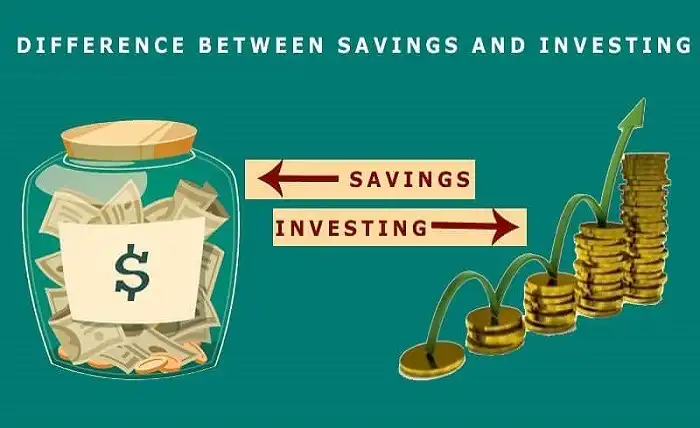Investing your money can be a great way to grow your wealth and achieve your financial goals. However, investing also involves some risks and challenges that you need to be aware of and prepared for. In this article, we will discuss some of the basic principles and tips on how to invest your money wisely and safely.
Know Your Goals and Risk Tolerance
Before you start investing, you need to have a clear idea of what you want to achieve with your money and how much risk you are willing to take. Different types of investments have different levels of risk and return, and they may suit different goals and time horizons. For example, if you are saving for a short-term goal, such as buying a car or a vacation, you may want to invest in low-risk and liquid assets, such as savings accounts or money market funds. On the other hand, if you are saving for a long-term goal, such as retirement or education, you may want to invest in higher-risk and higher-return assets, such as stocks or bonds.
Read more about: how2invest
To determine your risk tolerance, you need to consider your age, income, expenses, debts, savings, and personality. Generally speaking, younger investors have more time to recover from market fluctuations and can afford to take more risks than older investors. Similarly, investors with higher income, lower expenses, less debt, and more savings can tolerate more risk than investors with lower income, higher expenses, more debt, and less savings. Moreover, investors with more confidence, knowledge, and experience in investing can handle more risk than investors with less confidence, knowledge, and experience.
Diversify Your Portfolio
One of the most important rules of investing is to diversify your portfolio. This means spreading your money across different types of assets, such as stocks, bonds, cash, real estate, commodities, etc., as well as different sectors, industries, countries, and companies. Diversification helps reduce your overall risk by minimizing the impact of any single asset or market on your portfolio. For example, if one of your stocks performs poorly or goes bankrupt, it will not affect your entire portfolio if you have other stocks or assets that are doing well or are unrelated.
To diversify your portfolio effectively, you need to consider the correlation between different assets and markets. Correlation measures how closely two assets or markets move together in the same or opposite direction. A positive correlation means that they tend to move together in the same direction; a negative correlation means that they tend to move in opposite directions; and a zero correlation means that they have no relation at all. Ideally, you want to have a mix of assets and markets that have low or negative correlation with each other so that they can balance each other out in different market conditions.
Do Your Research and Due Diligence
Another key principle of investing is to do your research and due diligence before making any investment decision. This means gathering as much information as possible about the asset or market you are interested in investing in and analyzing its performance history, current situation, future prospects, risks, opportunities, strengths, weaknesses, etc. You also need to compare the asset or market with other similar or alternative options and evaluate its potential return and risk relative to them.
To do your research and due diligence effectively, you need to use reliable sources of information and data. Some of the common sources include financial websites (such as [Bing Finance]), newspapers (such as [The Wall Street Journal]), magazines (such as [Forbes]), books (such as [The Intelligent Investor]), reports (such as [annual reports] or [prospectuses]), podcasts (such as [Planet Money]), blogs (such as [The Motley Fool]), forums (such as [Reddit]), newsletters (such as [Morningstar]), advisors (such as [financial planners] or [brokers]), etc.
However, you should not rely on any single source of information or data blindly. You should always verify the accuracy, credibility, timeliness, relevance, and bias of the information or data you use. You should also be aware of the limitations and assumptions of the information or data you use. For example, past performance does not guarantee future results; forecasts are not facts; opinions are not facts; etc.
Monitor Your Portfolio and Adjust Accordingly
The last principle of investing is to monitor your portfolio regularly and adjust it accordingly based on your goals, risk tolerance, performance, market conditions, and life changes. You should review your portfolio at least once a year or more frequently if there are significant changes in any of these factors. You should also rebalance your portfolio periodically to maintain your desired asset allocation and risk level. Rebalancing means selling some of the assets that have increased in value and buying some of the assets that have decreased in value to restore your original portfolio proportions.
To monitor and adjust your portfolio effectively, you need to use appropriate tools and metrics. Some of the common tools and metrics include portfolio trackers (such as [Bing Portfolio]), performance charts (such as [Bing Charts]), benchmarks (such as [S&P 500] or [Dow Jones Industrial Average]), ratios (such as [return on investment (ROI)] or [sharpe ratio]), indicators (such as [price-to-earnings (P/E)] or [dividend yield]), etc. To do your research and due diligence effectively, you need to use reliable sources of information and data.
Conclusion
Investing your money can be a rewarding and enjoyable activity if you follow some of the basic principles and tips discussed in this article. By knowing your goals and risk tolerance, diversifying your portfolio, doing your research and due diligence, and monitoring your portfolio and adjusting accordingly, you can increase your chances of achieving your financial goals and growing your wealth safely and wisely. Happy investing!

